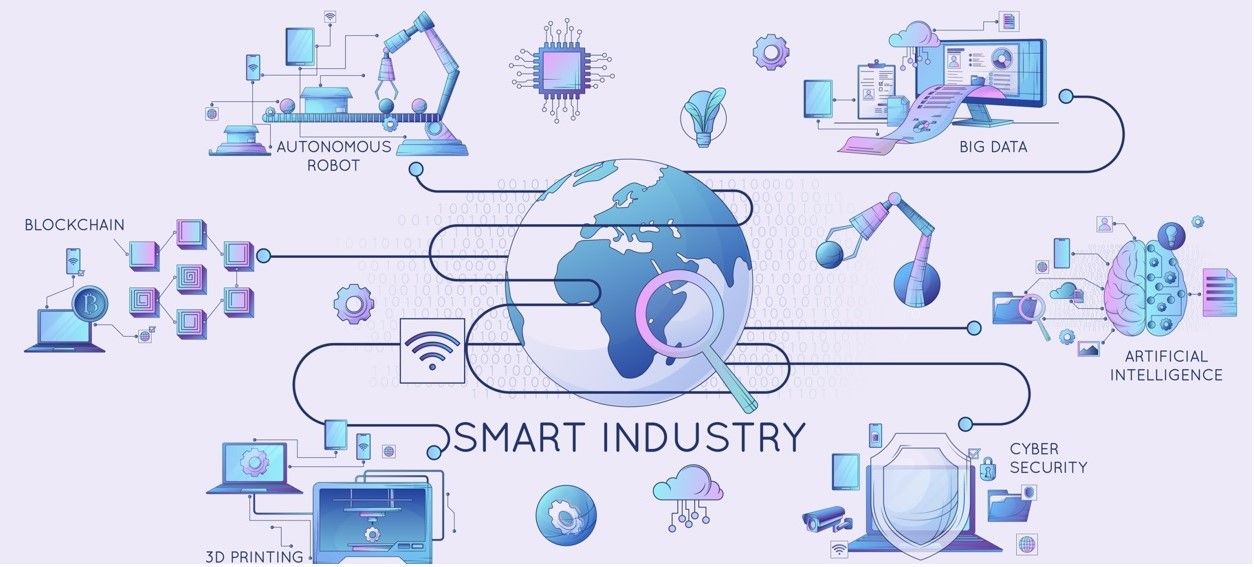Since the launch of Windows 98 the world has truly been entering the digital age. While the changes to everyday life, such as online shopping, social media, and Zoom meetings with colleagues and business partners anywhere on the planet are clear, it is less certain exactly how this cataclysmic change is going to alter the chemical industry.
How will digitalisation change chemical production? What will chemical markets look like in the year 2050? And how will industrial raw material suppliers and manufacturers interact when the digital age is truly underway?

How Digitalisation is Changing the Manufacture of Industrial Chemicals
While the concept of digitalisation has been much hyped over the past few years, the implementation of machine learning and artificial intelligence into chemical production have not been as fast as many predicted.
This is in part due to the relatively slow change of modernising industrial chemical facilities. Chemical plants that were built during the end of the last century may still only middle aged and updating them with sufficient sensors and networks to be considered part of Industry 4.0 is prohibitively expensive.
That said, there is still a great deal of streamlining and efficiency that digitalisation can bring to chemical companies.
As Jennifer Sexton, the Director of CAS Custom Services (a division of the American Chemical Society) notes, “From better data management to improved resource use, digital transformation can empower industries by rethinking and optimizing their chemical processes [and] reducing their environmental impact.” Adding the caveat that, “… predictions for the next decade give businesses undertaking digital transformation only a 30% chance of success.”

Digitalisation in Chemical Industry Markets
Online marketplaces enable instant comparisons between chemical suppliers for price, quality, and logistics. In addition to having quick and easy access to what they need, online raw material buyers can also access technical data and product papers from multiple providers.
But given these advantages and the success of online retail shopping, it is surprising that the procurement of bulk raw materials and industrial chemicals has not followed suit. Instead, the shift to digital markets has been slow and piecemeal.
“One way that companies are using technology to reach more customers is through online marketplaces,” notes Karen Parker, a chemicals industry analyst and editor-in-chief at Adhesives & Sealants Industry magazine. “This trend was strengthened during the COVID-19 pandemic, when supply chain issues made finding the correct chemical for formulations challenging and adhesive and sealant manufacturers were forced to look for alternative materials for their formulations.”
But while the pandemic may have given a boost to online purchasing, industrial chemical markets may now be on the verge of major changes as a younger generation begins to enter the chemical industry - truly transforming how chemical business is conducted.
“Thanks to a generational shift on the buyer side, today’s formulators, research and development professionals, and procurement teams are getting increasingly younger. This new generation of buyers is accustomed to doing everything online and is looking for a digital-first buying experience,” says Ali Amin-Javaheri, co-founder and CEO of Knowde, an online industrial chemicals marketplace. “On the supplier side, chemical companies and distributors have relied on direct sales teams and trade shows for years, and this is where they have traditionally invested their resources. But in the current economic environment, companies are waking up to the need to find new ways to meet and engage customers where they are online.”

In addition to this, digital platforms in the chemical sector can address inefficiencies, like product-supply planning and transaction execution, as well as initiating more transparency.
Perhaps the greatest sea-change that digitalisation will bring the chemical industry is an openness of data and pricing. While chemical companies have historically been highly secretive of their formulas and pricing policies, the Internet has been a great leveller for sharing data. Once this is shared, then a boost towards innovation should be expected.
You might also like: 9 Chemical Industry Factors to Watch in 2024 or Top 5 Chemical Industry Buzzwords for 2024
This is because information availability is essential for experts working in chemical formulation, research, and development. At present, a great deal of product information is locked away in brochures and technical data sheets that are not accessible online making it difficult to access.
Utilising this data to feed customer relationship management (CRM) and enterprise resource planning (ERP) systems and provide salespeople with the resources they need to succeed is challenging. Only by digitizing this content can internal systems come into harmony. Combining the best of R&D with customer needs and online experience.

What will chemical markets look like in the year 2050?
The world will be a vastly different place in 30 years’ time. By then, digital technology will become far more automated into everyday life through the application of AI in sales, self-ordering processes, and the Internet of Things.
Digital systems will find their greatest uses in e-commerce, customer interaction, and product discovery. Facilitating rapid and effortless search functions and providing technical information to chemists, formulators, and R&D experts.
When combined, this will help expedite product development and accelerate time to market. The main advantage for procurement specialists is that digital technology will make the sourcing of materials easier and help them avoid the problems that have been linked to the purchasing process for so many years.
Photo credit: 12019 on Pixabay, Joshua Sortino on Unsplash, Freepik, Macrovector, & Evening tao.